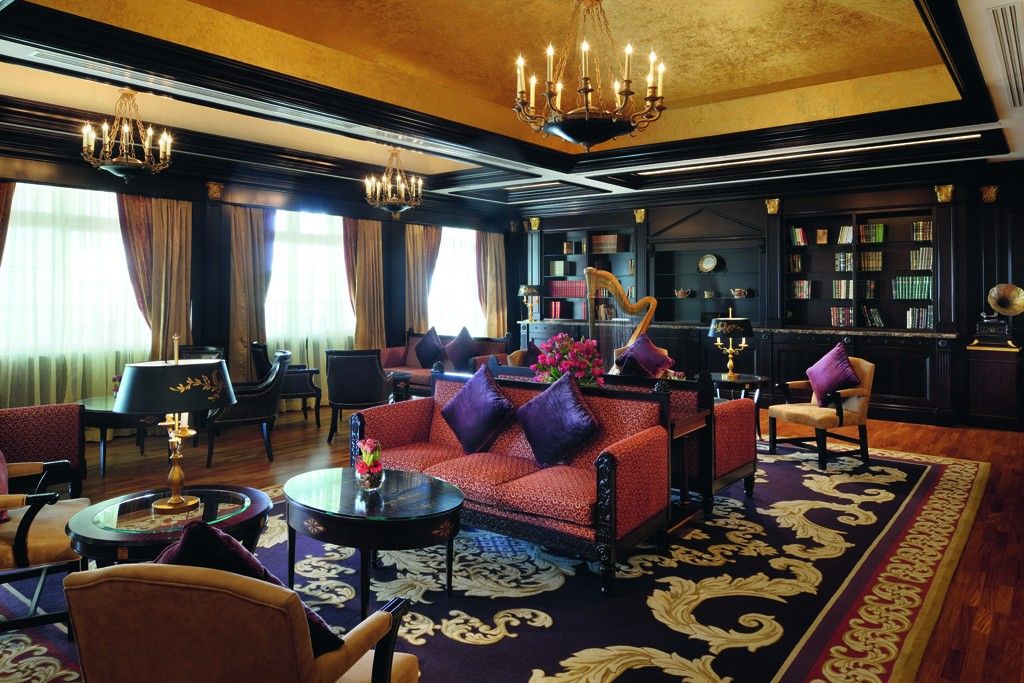High Tea Ceremony!
Victoria Tea Lounge Movenpick is located at hotel Al Aziziyah and is designed to resemble an old English parlour where tea and cakes are traditionally savoured. It is an elegant lounge with stylish mahogany and burl-panelled interiors. Having recently stayed at the Movenpick we had been lucky enough to enjoy our afternoon tea at the Victoria Tea Lounge where the Chinese Tea master told us all about the history of tea from its homoeopathic benefits, to its origin. In all though, we had afternoon tea on all three stays we had at this property.
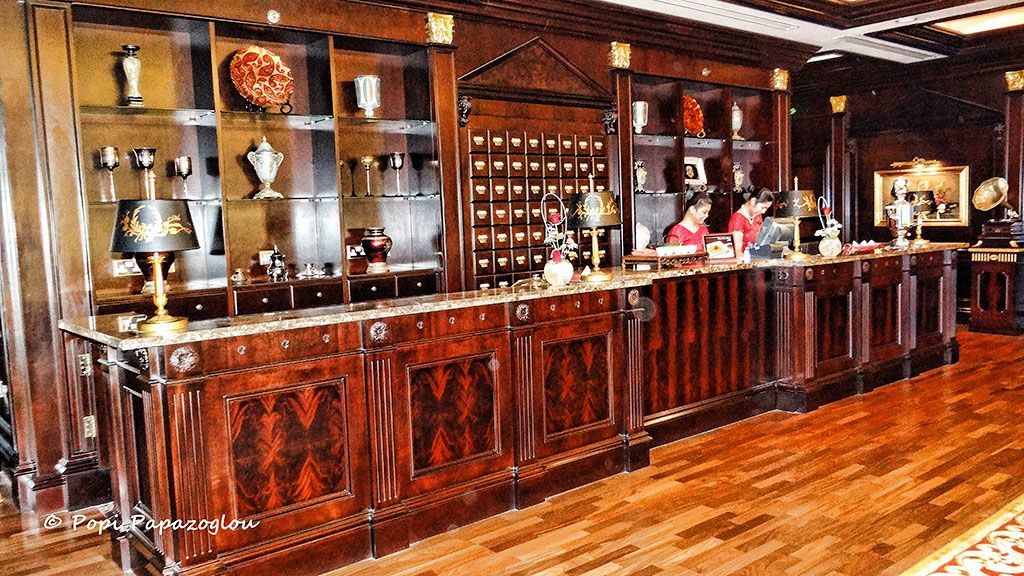
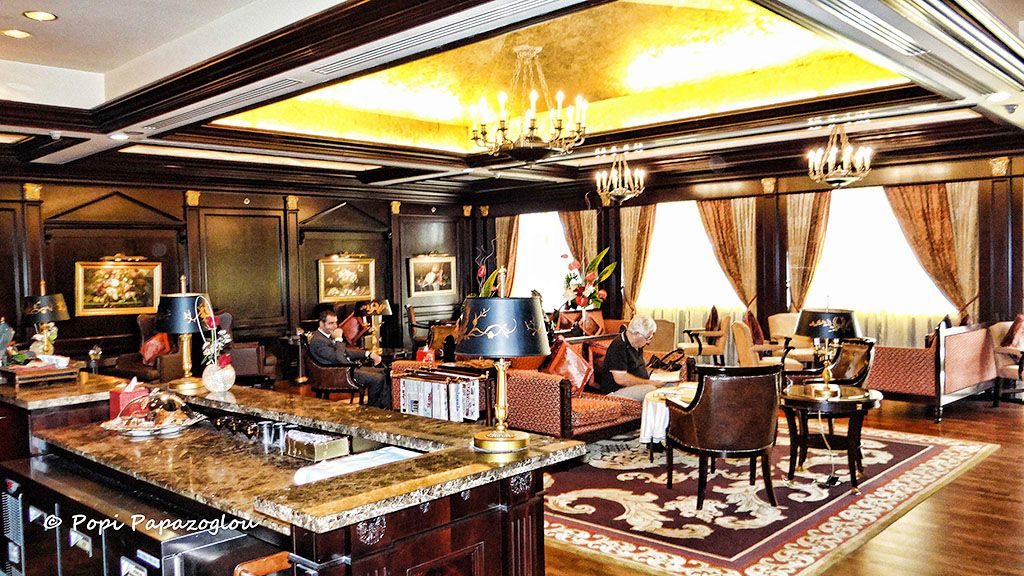 The fabulous Victoria Tea Lounge hosts an old English library with hardbound leather books on shelves and antique-style seats made of leather and suede. These create the unique atmosphere of the Victoria Tea Lounge Movenpick and reflects the charm of a bygone era. Delicate white lace drapes stand behind gold-coloured heavy silk ones and chandeliers suspended from the ceiling that is covered with gold leaves, all of which recreate the feeling of being in an authentic Victorian living room.
The fabulous Victoria Tea Lounge hosts an old English library with hardbound leather books on shelves and antique-style seats made of leather and suede. These create the unique atmosphere of the Victoria Tea Lounge Movenpick and reflects the charm of a bygone era. Delicate white lace drapes stand behind gold-coloured heavy silk ones and chandeliers suspended from the ceiling that is covered with gold leaves, all of which recreate the feeling of being in an authentic Victorian living room.
Victoria Tea Lounge Movenpick
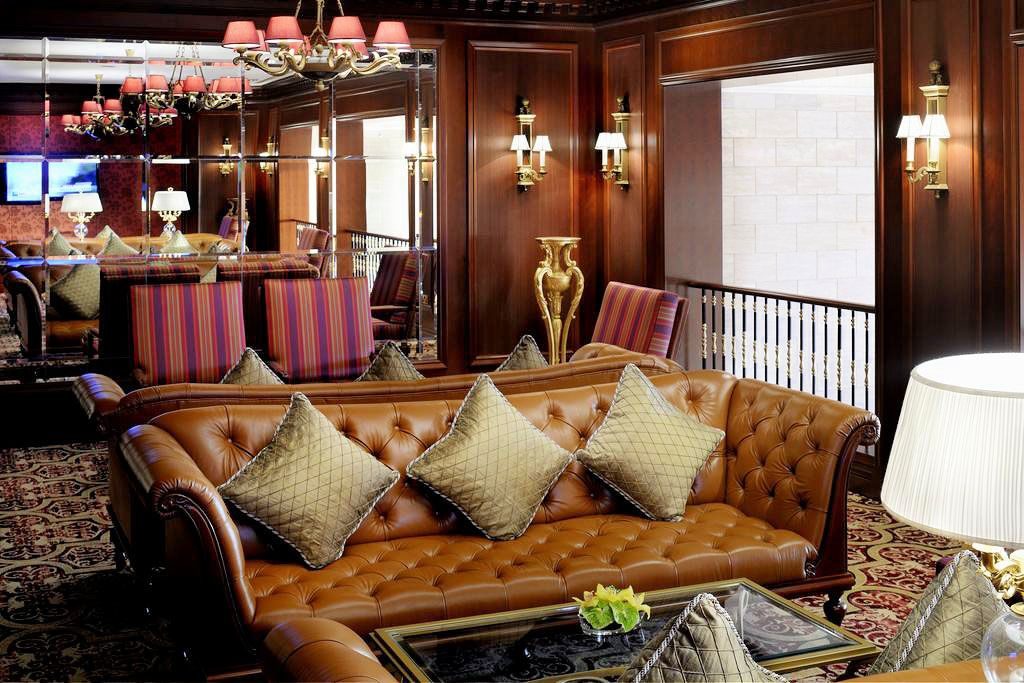 There is a choice of lower tables to sit and make yourselves comfortable in the secluded library décor of the Victoria Tea Lounge while the huge wall mirror creates the illusion of a bigger space. The interior of the Victoria Tea Lounge travelled us, while the sound of harp music was flowing through the whole room. It was fun and we were enjoying ourselves until some locals entered the lounge and spoiled the whole atmosphere. Of course, who can say anything to them! Not even the management of the hotel I am sure.
There is a choice of lower tables to sit and make yourselves comfortable in the secluded library décor of the Victoria Tea Lounge while the huge wall mirror creates the illusion of a bigger space. The interior of the Victoria Tea Lounge travelled us, while the sound of harp music was flowing through the whole room. It was fun and we were enjoying ourselves until some locals entered the lounge and spoiled the whole atmosphere. Of course, who can say anything to them! Not even the management of the hotel I am sure.
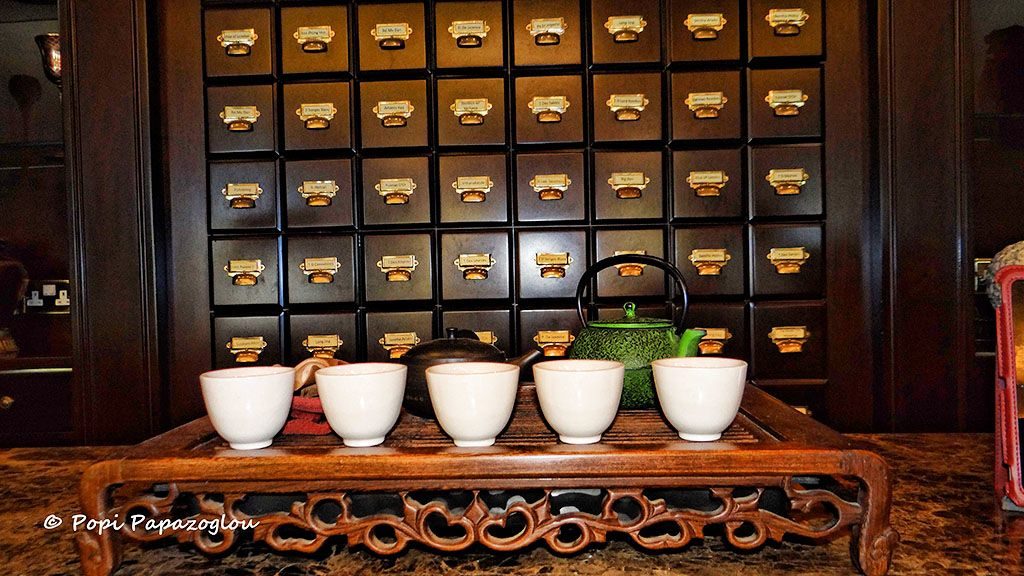
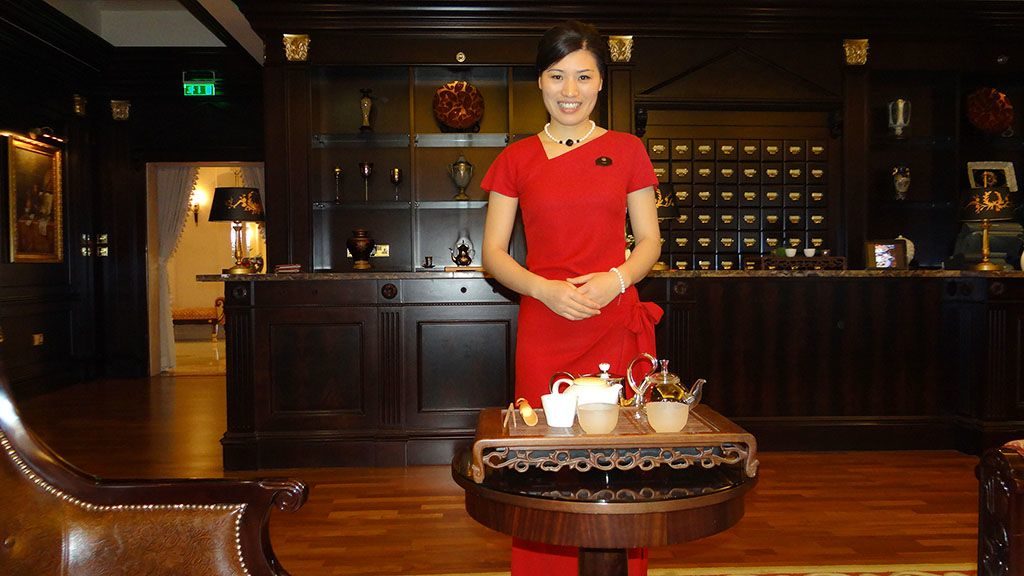 The Chinese Tea master shows up shortly after we made ourselves comfortable, approaches us and introduces herself. She is Yoyo, a lovely lady, a true professional who seems well aware of what she is about to present. With very slow movements and in a very charismatic and ceremonial way she starts off with the history of tea first before we come to the choice of our tea and everything that goes with it. Getting the chance to chat with Yoyo was a true highlight, she’s such a lovely lady and our conversation has made me even more appreciative of the history of tea, which I am sharing much below.
The Chinese Tea master shows up shortly after we made ourselves comfortable, approaches us and introduces herself. She is Yoyo, a lovely lady, a true professional who seems well aware of what she is about to present. With very slow movements and in a very charismatic and ceremonial way she starts off with the history of tea first before we come to the choice of our tea and everything that goes with it. Getting the chance to chat with Yoyo was a true highlight, she’s such a lovely lady and our conversation has made me even more appreciative of the history of tea, which I am sharing much below.
Victoria Tea Lounge Movenpick
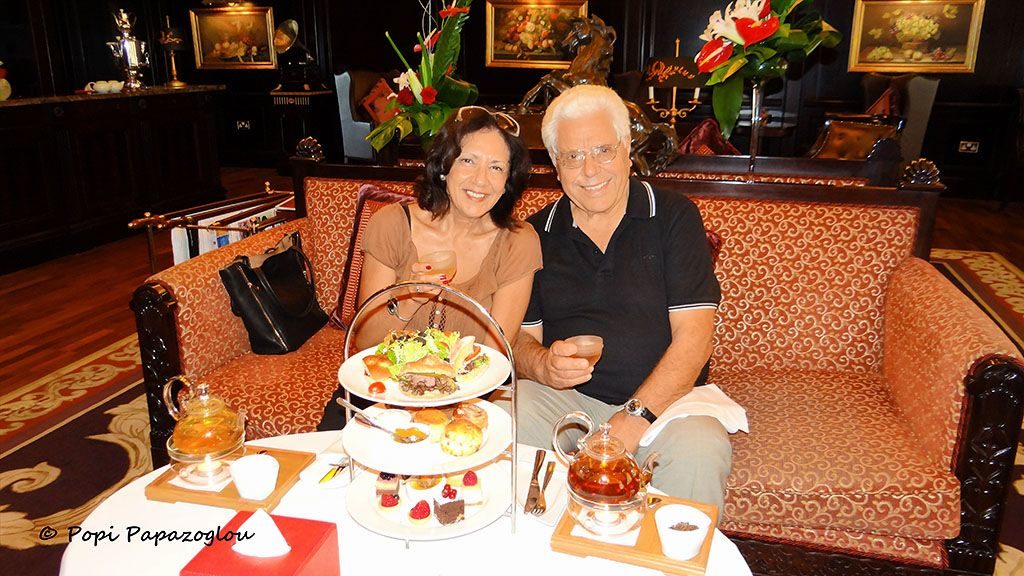 Along with our tea, we had the 3 tier stand brought, while the freshly baked scent awoke our senses before it was even nestled in front of us on the low table. Our waitress went through the tier and explained all the treats to us, a welcome addition as not all establishments offer this and you are sometimes left guessing as to what you are nibbling on. Oh dear, that smell was divine, those baking devils!
Along with our tea, we had the 3 tier stand brought, while the freshly baked scent awoke our senses before it was even nestled in front of us on the low table. Our waitress went through the tier and explained all the treats to us, a welcome addition as not all establishments offer this and you are sometimes left guessing as to what you are nibbling on. Oh dear, that smell was divine, those baking devils!
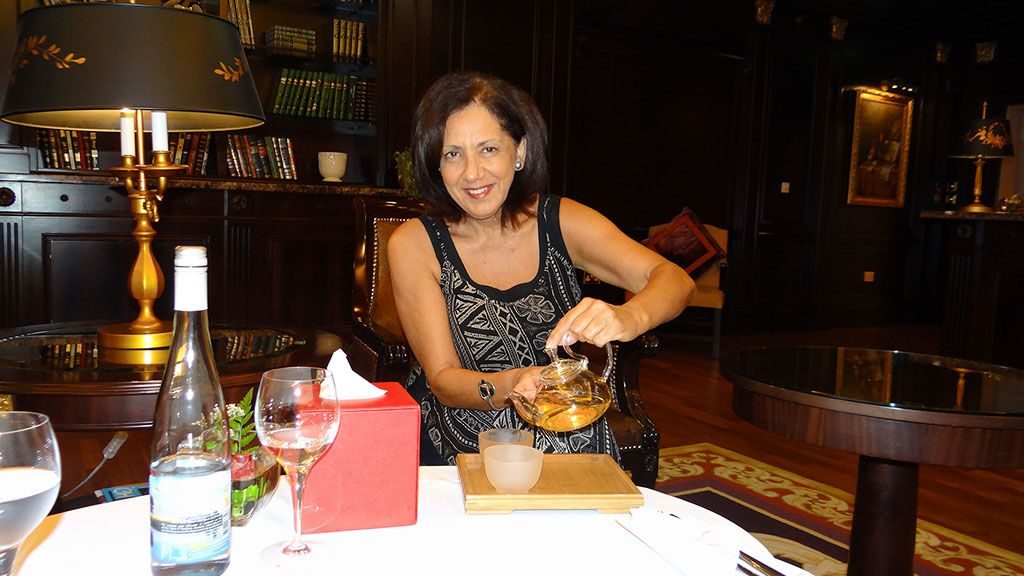 What I loved most about the service here was that it wasn’t rushed and the noisy locals had made their way out, which was a relief for us.
What I loved most about the service here was that it wasn’t rushed and the noisy locals had made their way out, which was a relief for us.
Our Tea Choice
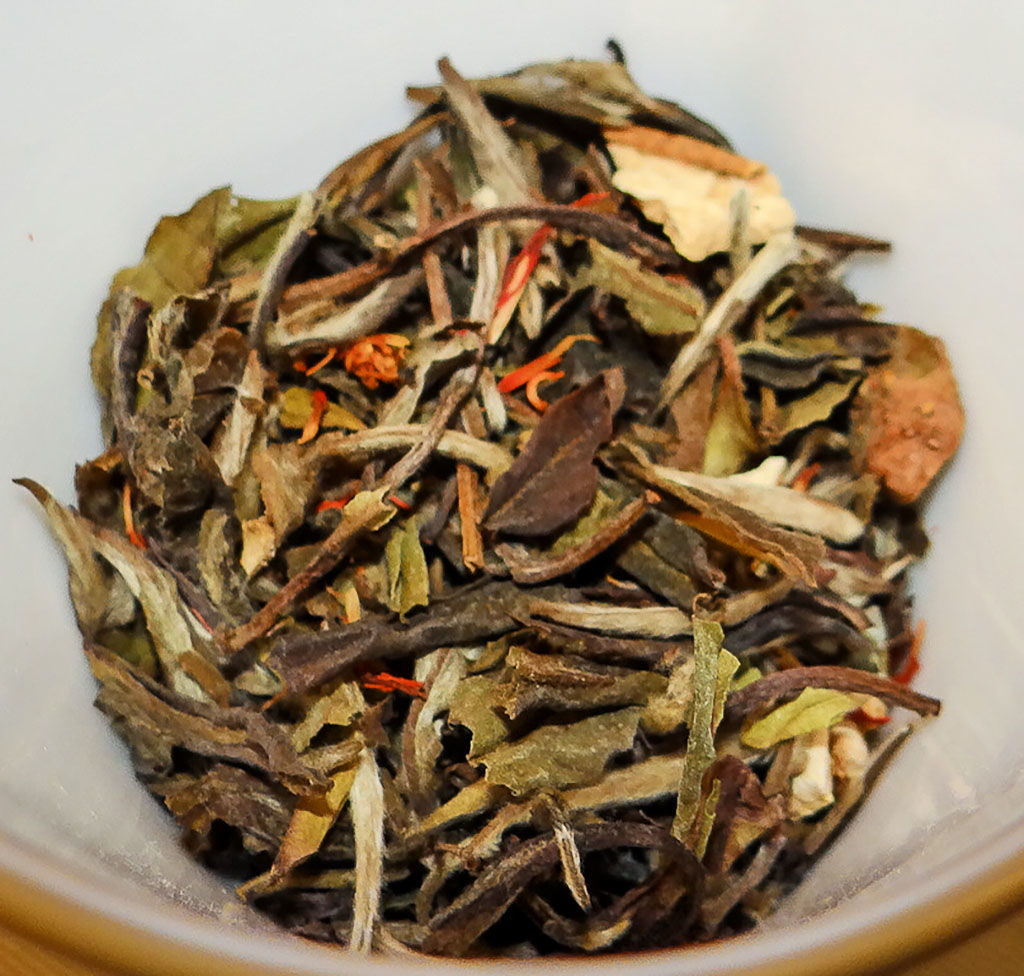 The “Des Songes Blanc” –The very best one. Time of infusion is 4 minutes and water temperature 70. It is a recipe created by Le Palais des Thes combining white tea, flowers and fruit. It has a delicate scent and evokes rose, orange blossom and red fruit. Safflower petals and strawberry pieces have been also added to a delicious Bai Mu Dan, which is refined and delicate.
The “Des Songes Blanc” –The very best one. Time of infusion is 4 minutes and water temperature 70. It is a recipe created by Le Palais des Thes combining white tea, flowers and fruit. It has a delicate scent and evokes rose, orange blossom and red fruit. Safflower petals and strawberry pieces have been also added to a delicious Bai Mu Dan, which is refined and delicate.
Victoria Tea Lounge Movenpick
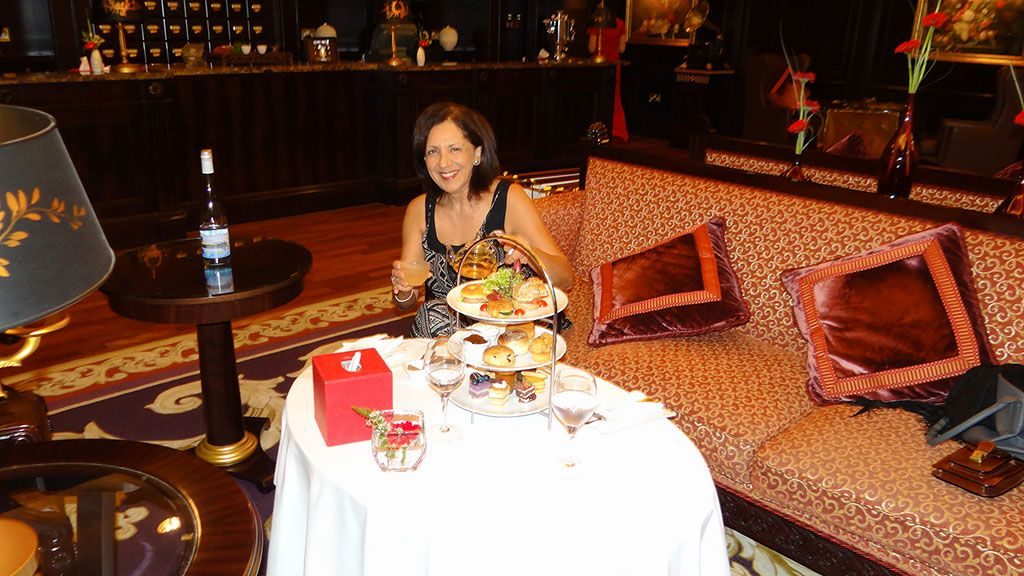 The second one was the “Perles De Jasmin” which was the second best on the list. Time of infusion is 4 minutes and water temperature 75C. This second blend is of very rare and available very sporadically “Jasmine Pearls” are produced using best quality green tea leaves which are rolled into tiny round balls. By being folded in the leaf preserves the delicate fragrance of the jasmine flower with which it was scented. This spectacular tea produces a beverage of the highest quality: the softness of the green tea is the perfect complement to the subtlety of the Jasmine. The roundness and the smoothness of the beverage feel like a pearl of tea to the palate. In the paragraphs below you will find out how everything about Tea began…enjoy it!
The second one was the “Perles De Jasmin” which was the second best on the list. Time of infusion is 4 minutes and water temperature 75C. This second blend is of very rare and available very sporadically “Jasmine Pearls” are produced using best quality green tea leaves which are rolled into tiny round balls. By being folded in the leaf preserves the delicate fragrance of the jasmine flower with which it was scented. This spectacular tea produces a beverage of the highest quality: the softness of the green tea is the perfect complement to the subtlety of the Jasmine. The roundness and the smoothness of the beverage feel like a pearl of tea to the palate. In the paragraphs below you will find out how everything about Tea began…enjoy it!
Tea and its Legend
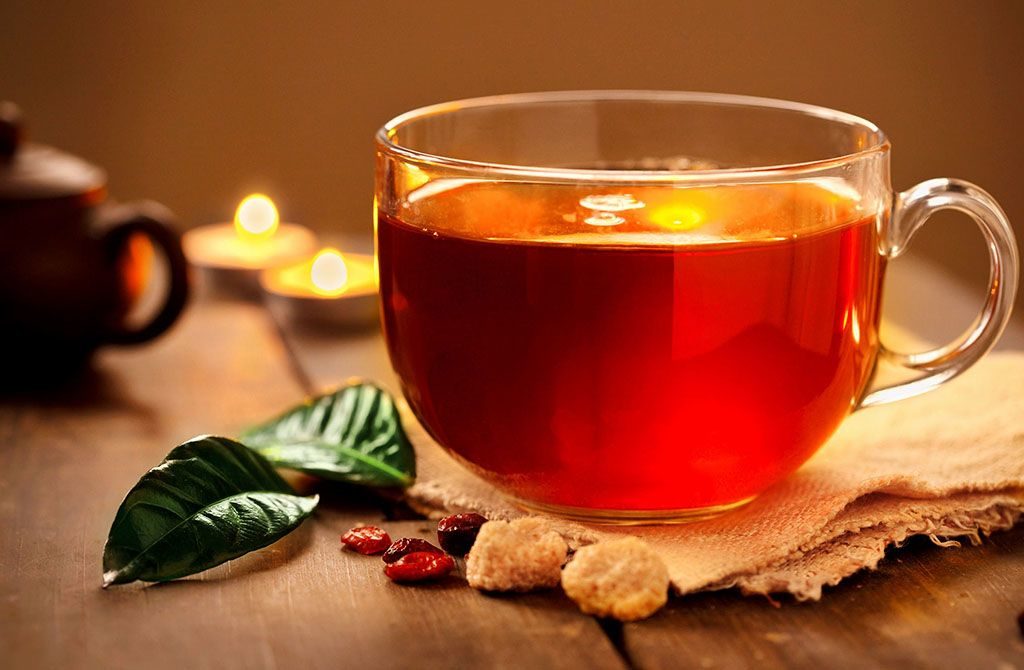 It all began in 2737BC in China. According to legend, whilst the emperor Shen Nung was boiling water to slake his thirst in the shade of a tree, a light breeze rustled the branches and caused a few leaves to fall. They mixed with the water and gave it a delicate colour and perfume. The emperor tasted it and found it to be delicious. The tree was a wild tea plant: This is how tea was born.
It all began in 2737BC in China. According to legend, whilst the emperor Shen Nung was boiling water to slake his thirst in the shade of a tree, a light breeze rustled the branches and caused a few leaves to fall. They mixed with the water and gave it a delicate colour and perfume. The emperor tasted it and found it to be delicious. The tree was a wild tea plant: This is how tea was born.
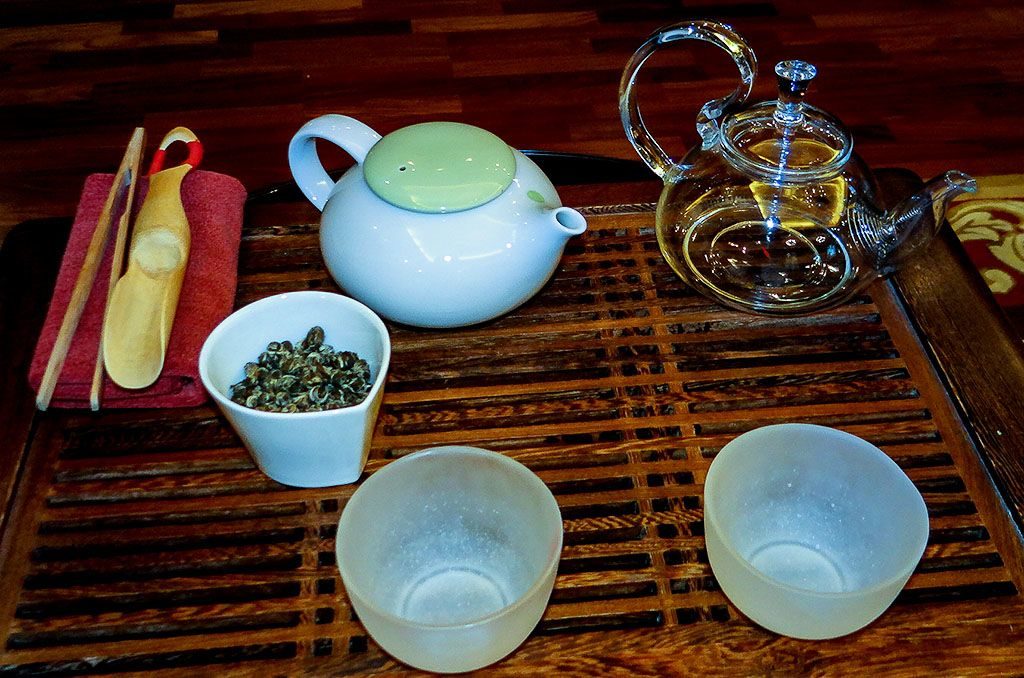 In India, another legend tells of how Prince Dharma was touched by Divine grace and went out to preach the teachings of Buddha in China. To make himself worthy, he vowed never to sleep during the nine years of his journey. At the end of the third year, however, he was overcome by drowsiness and was about to fall asleep when by chance he plucked a few leaves from a wild tea plant and began to chew them. The stimulating qualities of tea immediately had their effect; Dharma felt much more alert and thereafter attributed the strength he found to stay awake during the six remaining years of his apostolic mission to these leaves.
In India, another legend tells of how Prince Dharma was touched by Divine grace and went out to preach the teachings of Buddha in China. To make himself worthy, he vowed never to sleep during the nine years of his journey. At the end of the third year, however, he was overcome by drowsiness and was about to fall asleep when by chance he plucked a few leaves from a wild tea plant and began to chew them. The stimulating qualities of tea immediately had their effect; Dharma felt much more alert and thereafter attributed the strength he found to stay awake during the six remaining years of his apostolic mission to these leaves.
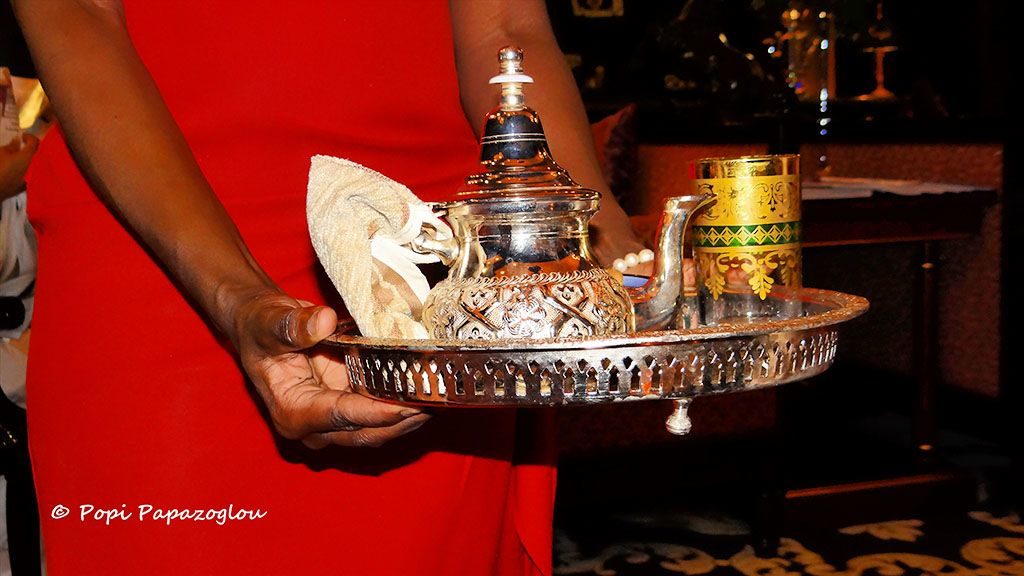 In Japan the story goes a little differently; after three years Bodhi Dharma, exhausted, ended up falling asleep while he prayed. Upon waking, infuriated by his weakness and devastated by his sin, he cut off his eyelids and threw them to the ground. Some years later, on passing the same spot, he saw that they had given birth to a bush that he had never seen before.
In Japan the story goes a little differently; after three years Bodhi Dharma, exhausted, ended up falling asleep while he prayed. Upon waking, infuriated by his weakness and devastated by his sin, he cut off his eyelids and threw them to the ground. Some years later, on passing the same spot, he saw that they had given birth to a bush that he had never seen before.
He tried the leaves and discovered that they had the property of keeping a person awake. He told the people around him about his discovery and tea began to be cultivated in those places through which he traveled.
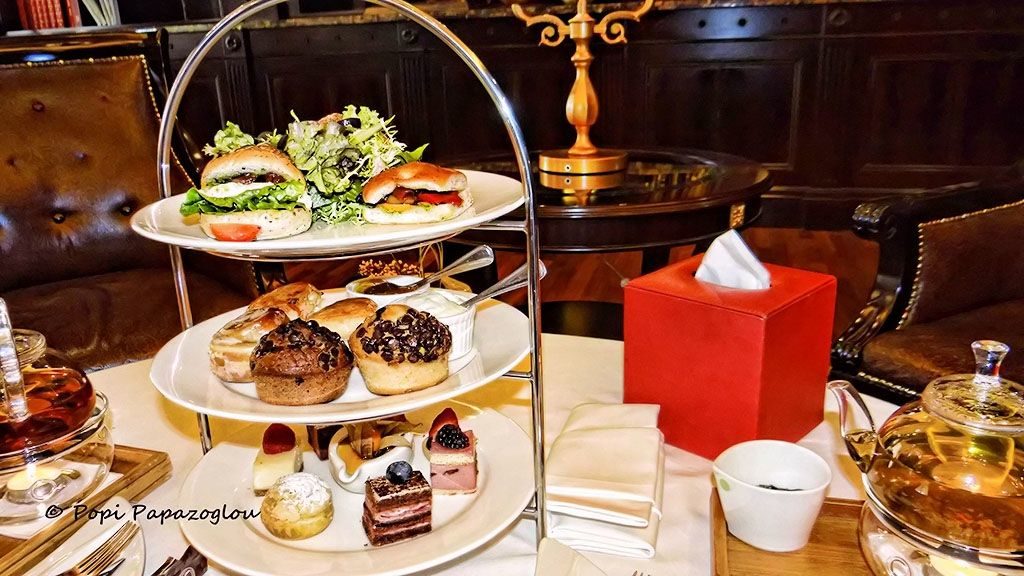 Legends aside, it seems that the bush was originally from China, probably from the region around the border between the North Vietnam and Yunnan province, and that the drinking of this beverage was first developed by the Chinese.
Legends aside, it seems that the bush was originally from China, probably from the region around the border between the North Vietnam and Yunnan province, and that the drinking of this beverage was first developed by the Chinese.
Since the invigorating and energizing qualities of tea were very soon noted, it was the first used for medicinal purposes, either externally in the form of a paste to combat rheumatism or internally as a purifying soup.
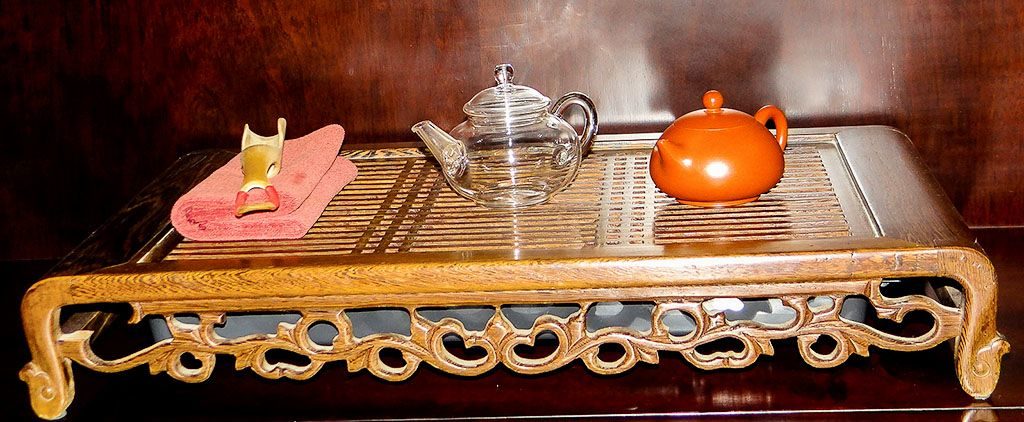 The first recipes for the preparation of tea were not too far from this idea: the leaves, which had been softened by steam, were ground with a mortar and pestle and compressed into flat cakes which were then brought to the boil with rice, milk, spices and sometimes even onions.
The first recipes for the preparation of tea were not too far from this idea: the leaves, which had been softened by steam, were ground with a mortar and pestle and compressed into flat cakes which were then brought to the boil with rice, milk, spices and sometimes even onions.




